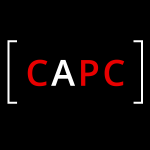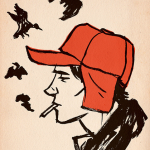One of the worst aspects of mental illness is its invisibility. With no obvious wound or bandage, we are left only with various and oftentimes confusing symptoms to identify and label. One artist is giving shape to these invisible conditions, hoping that his artistic renderings will objectify these powerful illnesses in ways that help those who suffer from them. Jennifer Miller reports on Toby Allen’s project in an article for Co.CREATE, explaining:
“In his new watercolor collection, Real Monsters, Allen gives form to serious illness including Borderline Personality Disorder, Schizophrenia, and Depression. He researches each condition and adds to the drawing as his understanding of the particular disorder comes into focus.”
Allen explains that his own battle with anxiety inspired him to the project, which he hopes will be helpful to others haunted by these invisible monsters of mental illness. In a recent Christ and Pop Culture feature, Ryan Masters shares how important it is to give “shape and scope” to his mother’s illness:
“[M]y mother has been marched through diagnosis after diagnosis, from depression to bipolar to anxiety disorder to schizophrenia. And with each diagnosis and its attendant drug my family has breathed a sigh of relief. Prior to a diagnosis, my mother was just unpredictable and self-destructive; afterward, she was sick and getting treatment. Those orange bottles that filled our cabinets were the fragile pillars upon which we erected our hope. They changed the language of my mother’s behavior, gave it shape and scope. As long as we knew what was wrong and how to treat it, we knew she would get better. Eventually.”
Although Allen’s project is meant specifically to help those struggling with mental illness either personally or via a loved one, I think his work could have a much wider reach. Personifying these illnesses make them real for those who aren’t familiar with them. Allen’s use of color, gestures, and expressions even give me a sense of the feelings that particular monster produces. And we also have something to point to, something to blame—something other than the person under attack. Increasing our understand of and familiarity with the ways people suffer is a means of extending dignity and grace, a way to extend compassion. I see Allen’s work is as a great place to start.











